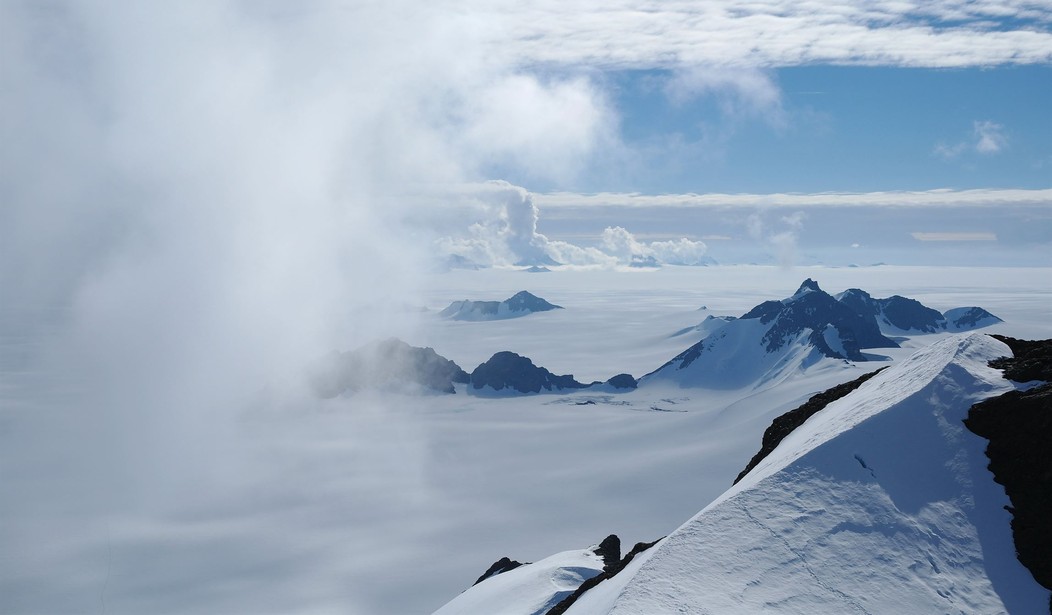The Arctic and the Antarctic are the darlings of the climate doomsday movement. Changes in their ice volume are often broadcasted as signs of the nearing climate apocalypse.
Following record high temperatures in Antarctica last week, the global media made a clarion call for saving the planet from the imminent threat of climate change.
One headline read, “Antarctica Records Highest Ever Temperature, Proves Climate Change.” “2020: A Warning,” declared another publication as it made reference to “severe forest fires sweeping through the Arctic.”
A closer look at the poles, however, reveals a totally different story. What do the changes in the Arctic and the Antarctica really entail?
The Arctic
The Arctic is more often used in climate doomsday narratives than Antarctica. What the doomsayers don’t tell you is that the Arctic is at one of its healthiest states in the past 10,000 years.
In 2017, scientists published details on sea-ice variation in the Arctic Ocean, spanning 10,000 years, a period known as the Holocene. The sea-ice cover today is at its highes tin the Holocene, except for the Little Ice Age in the 17th century.
The same was true for the sea waters in the North of Iceland (part of the Arctic Ocean). The present-day sea ice extent there is higher than in most of the past 10,000 years.
The sea ice was at some of its lowest levels during the Medieval and Roman Warm Periods (roughly the 1st and 10th centuries, respectively), two periods that experienced temperatures as high as today’s.
Despite the current warm period (known as Modern Warm Period) being as warm as these past periods, Arctic sea ice extent, though lower than it was during the Little Ice Age, remains at historic highs compared with the rest of the last 10 millennia.
Recommended
Arctic Sea Ice is not in danger from the ongoing changes in global average temperature, nor has it been impacted as it was during the previous two warm periods of the last 2000 years.
The Antarctic
Since 1979, there has been an increase in Antarctic sea ice extent. This is one of the main reasons why climate fearmongers prefer to focus on the Arctic rather than the Antarctic in their doomsday lectures and discourses.
The growth trend of Antarctic sea ice does not bode well for the mainstream narrative. A 2017 study concluded, “The Antarctic sea ice extent has been slowly increasing contrary to expected trends due to global warming and results from coupled climate models.”
And it is not just the sea ice extent. In a 2018 study, scientists reported “Southern Ocean changes over recent decades include surface cooling and circumpolar increase in Antarctic sea ice.”
Southern Ocean sea surface temperatures have been declining since the 1980s and are inconsistent with the alarmist view that the Antarctic is in danger from high temperatures and rising atmospheric CO2 levels.
If we consider the entire Holocene, the Antarctic sea ice levels during the past 100 years or so are the most extensive in 10,000 years! They are at one of their highest levels despite contrary claims by the media. A brief record high temperature doesn’t imply that suddenly things are different. That’s particularly so if we recognize that it’s a record only for as long as we’ve been recording temperature in Antarctica. That doesn’t go back very far, particularly if we’re talking about enough monitoring stations to come remotely close to a representative sample of the massive and almost totally uninhabited continent.
While it is true that the poles experience constant changes in climate, they are not under threat from the ongoing changes in climate. Given the rapid increase in atmospheric carbon dioxide concentration levels since 1850, it is surprising to see how insignificant its impact has been on sea ice extent near the poles.
The mainstream media use short-term changes in sea-ice extent, and even shorter-term changes in temperature to make sensational claims about sea-ice melt and global warming. By so doing, they deprive their audiences of historical perspective. This in turn helps alarmists sell their doomsday narrative.
The two poles tell the same story: Sea ice levels today are more extensive than in much of the last 10,000 years, they are not declining in an unprecedented manner, and they remain largely unaffected by the emission of greenhouse gases.
Vijay Jayaraj (M.Sc., Environmental Science, University of East Anglia, England), is a Research Contributor for the Cornwall Alliance for the Stewardship of Creation.

























Join the conversation as a VIP Member